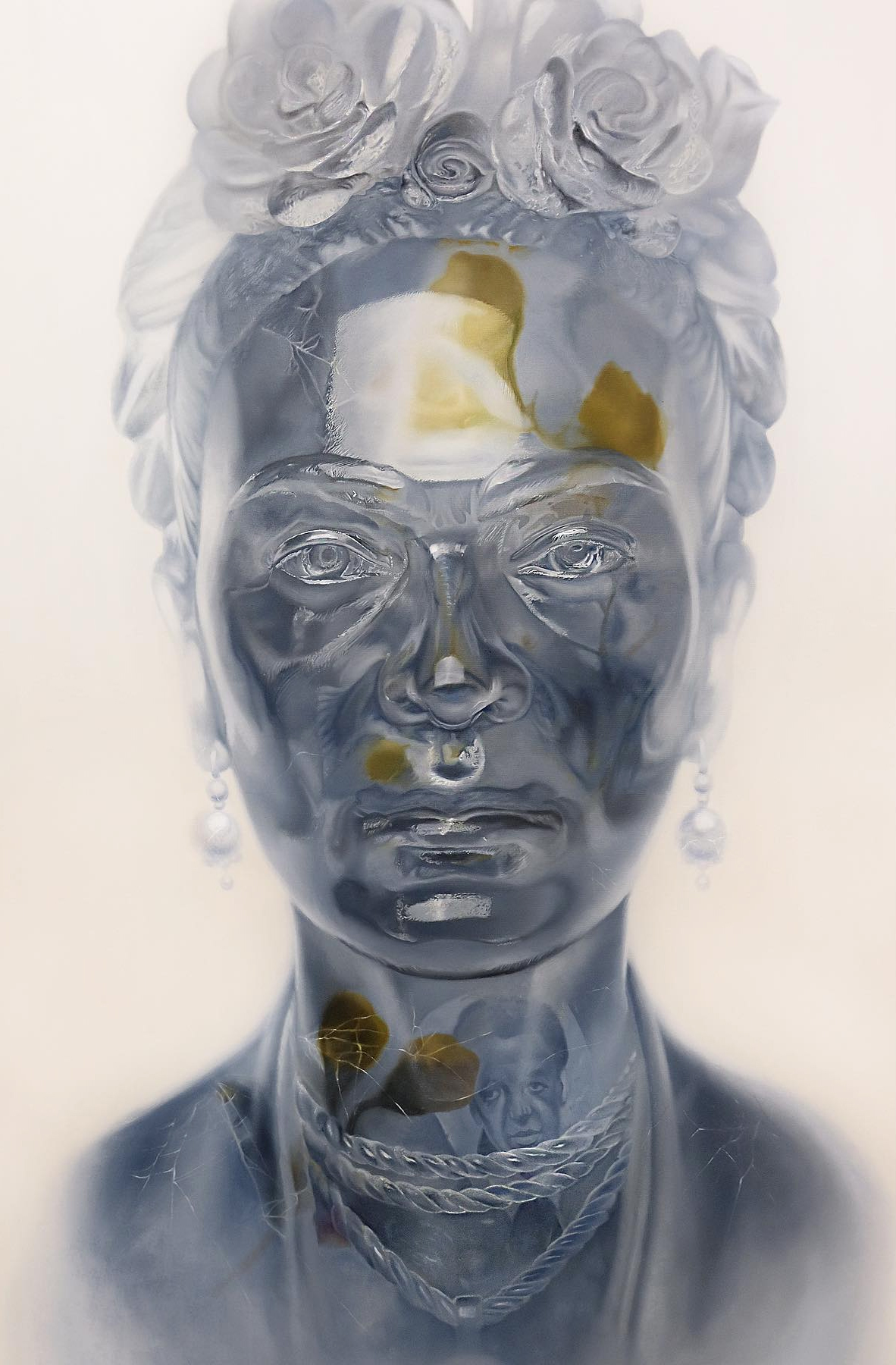
Born in Bologna, Nunzio Paci developed his artistic finesse viewing the Baroque style of painting promoted in Paci’s home city in the 16th and 17th centuries. The Accademia degli Incamminati (Academy of Progressives) was established in 1582 and elevated the arts to the same level of intellectual rigor as astronomy and medicine, in addition to poetry and music. In the 21st century, Paci continues the tradition of his ancestors, innovating compositions that are a triangulation of anatomical study, lyrical song, and psychological probe.
Paci peels away flesh, using oil to paint the inner anatomy of men, young and old. Muscles, ligaments and bone tissue pulse with vibrancy in contrast to the muted pencil strokes that make up the men’s faces. From the characters, tree branches emerge, flowers bloom and birds perch. My merging these forces, Paci demonstrates the necessary interconnections between man and nature. However, the relation is not perfectly symbiotic or blissful, as the men strain their necks and look away in an attempt to escape.















 In the recent, enormous portraits painted by Mike Dargas, the artist pays homage to major figures in art history and tucks surprises into their contours. With “The Unbreakable," which honors Frida Kahlo, the artist says she was "physically broken but her spirit was unbreakable and her powerful essence eternal.” See more of his recent portraits below.
In the recent, enormous portraits painted by Mike Dargas, the artist pays homage to major figures in art history and tucks surprises into their contours. With “The Unbreakable," which honors Frida Kahlo, the artist says she was "physically broken but her spirit was unbreakable and her powerful essence eternal.” See more of his recent portraits below.
 Using transparent cloths clad to the canvas, painter
Using transparent cloths clad to the canvas, painter